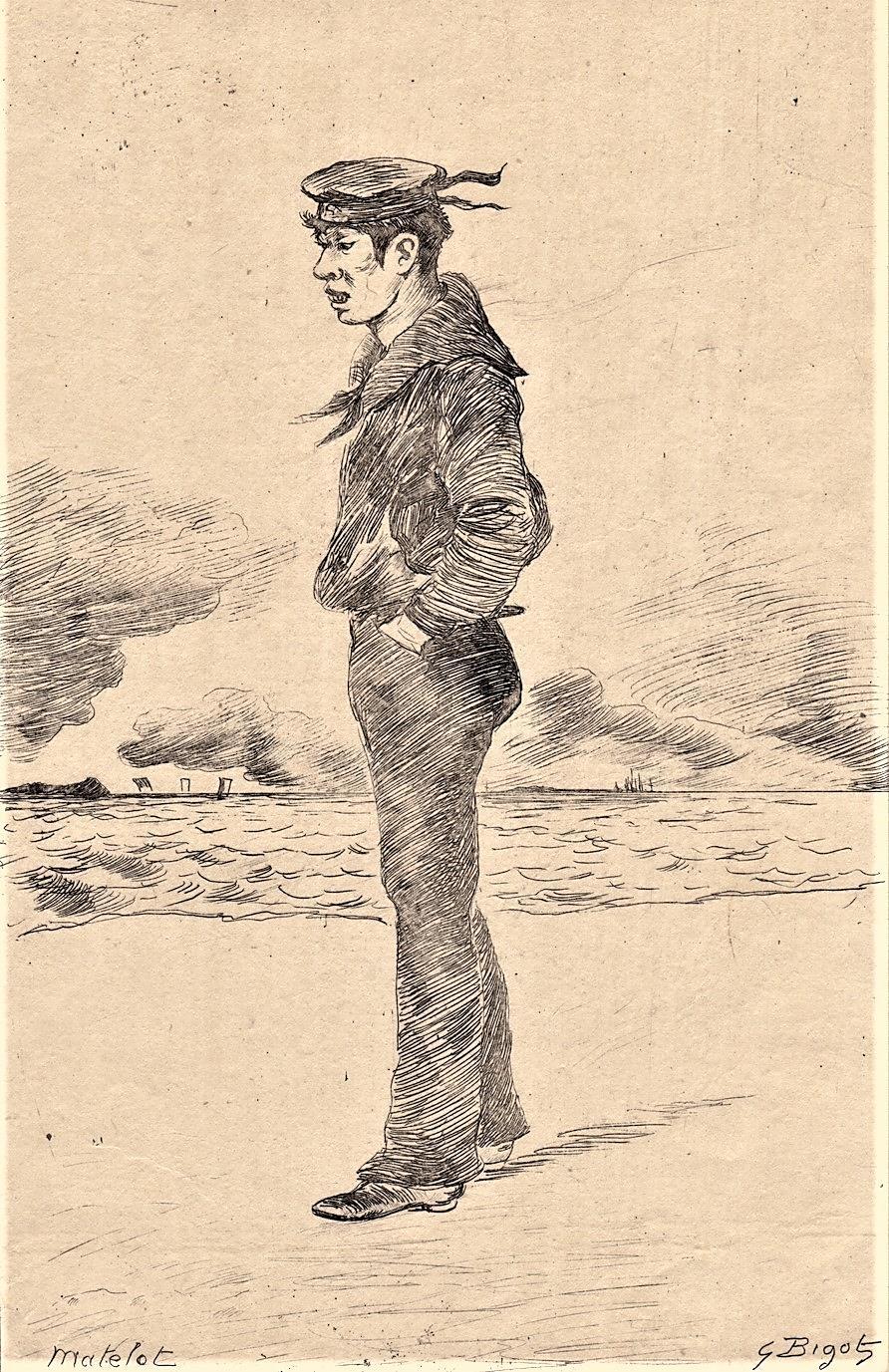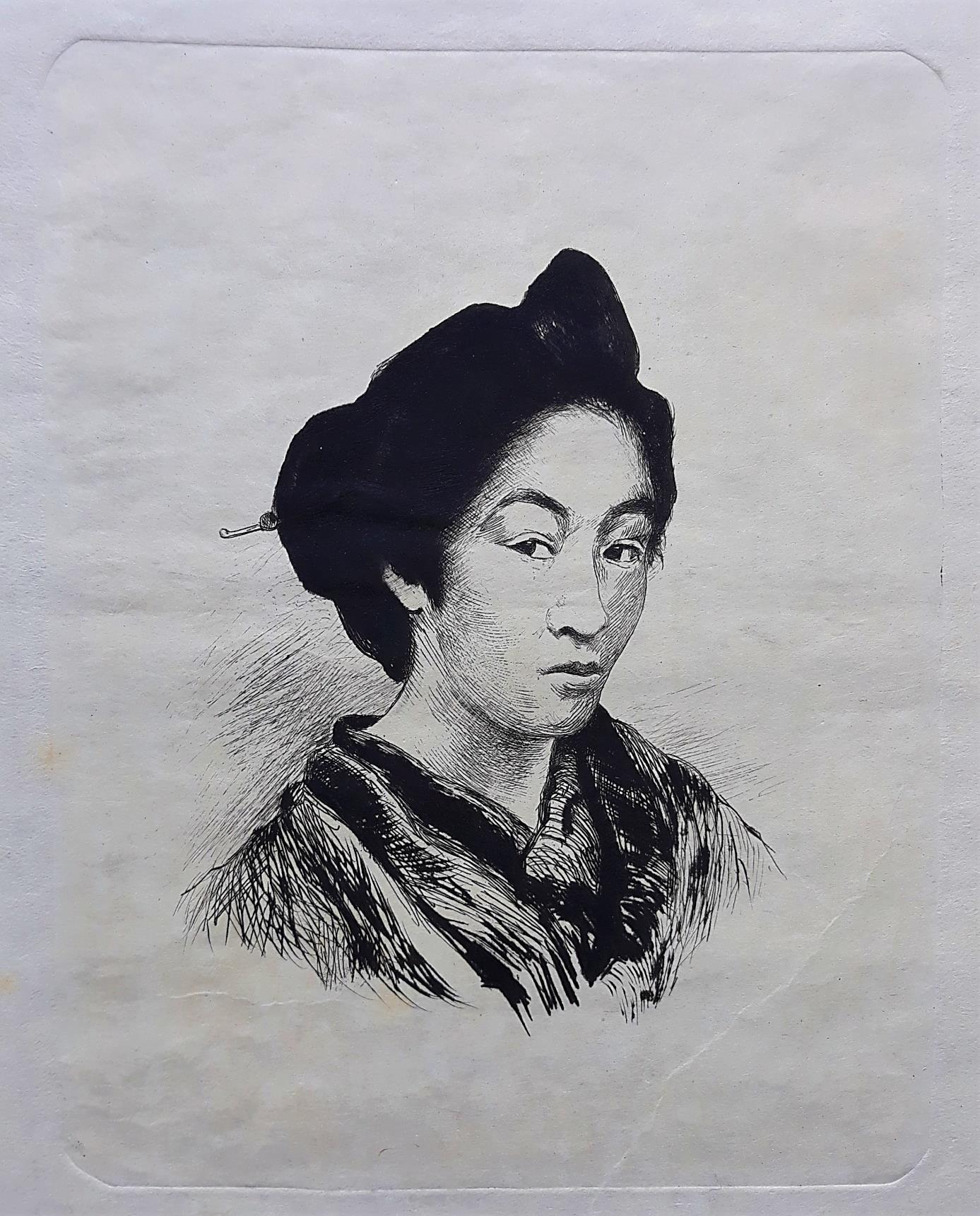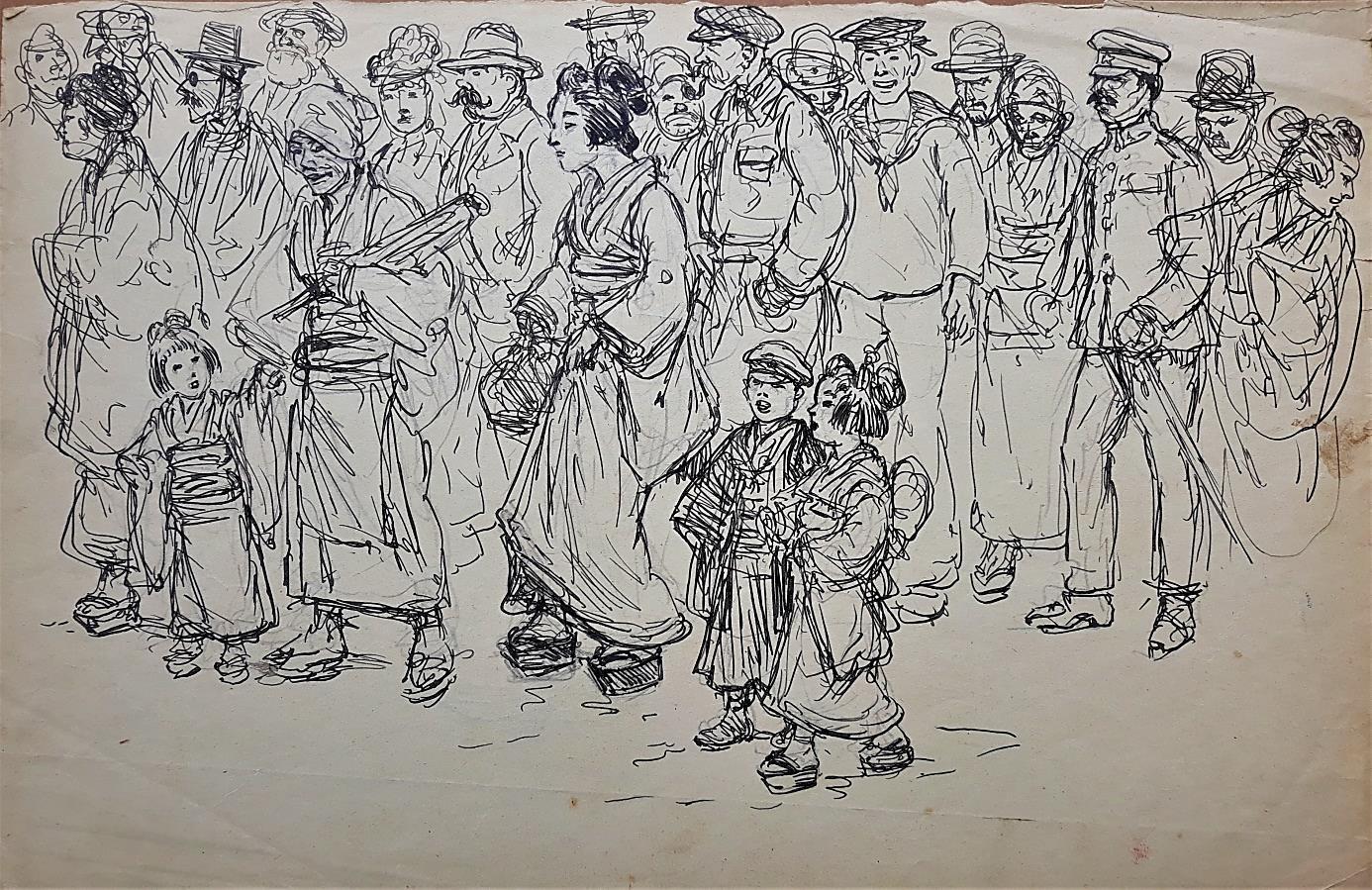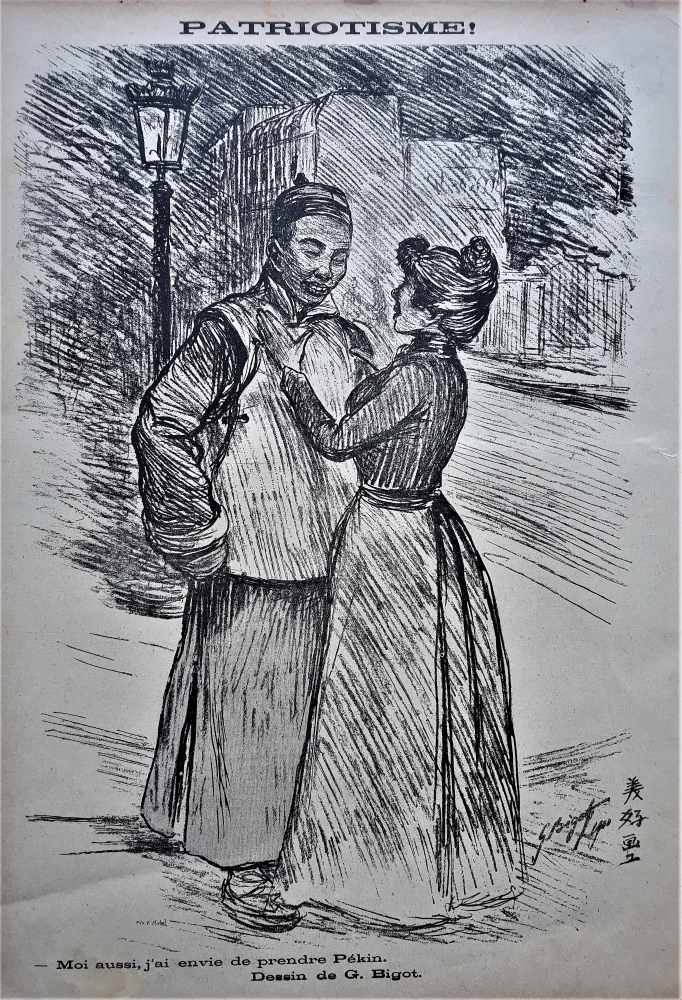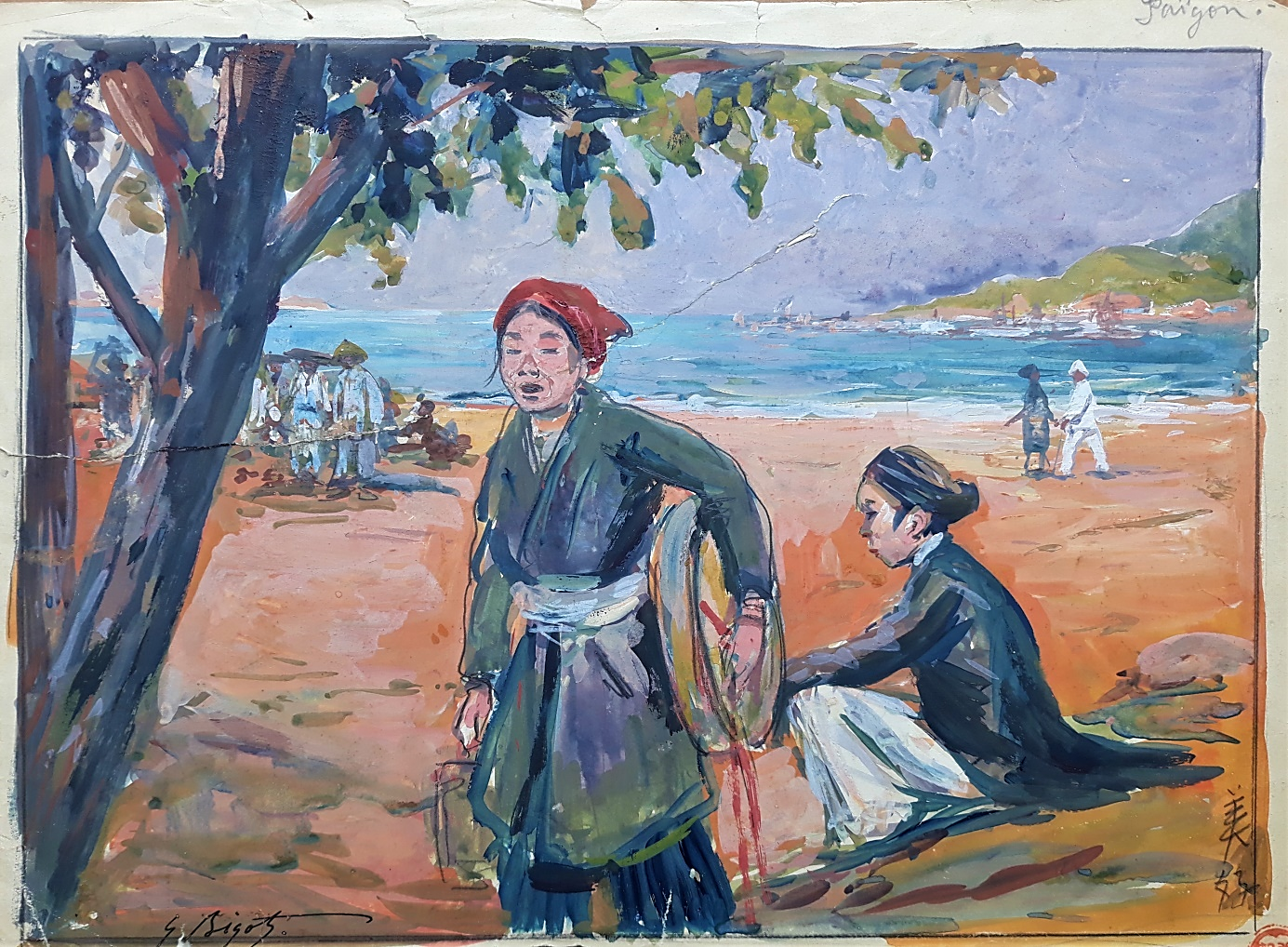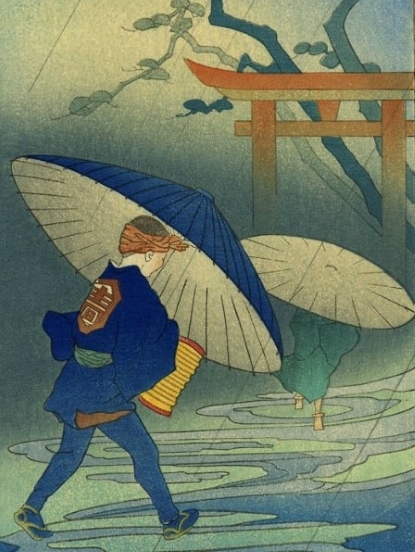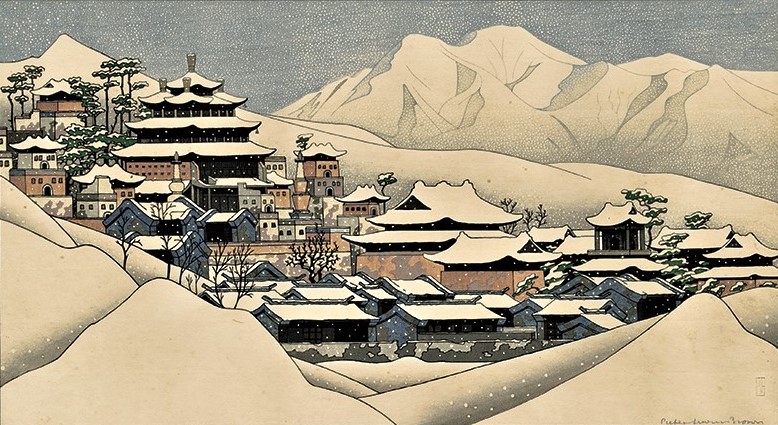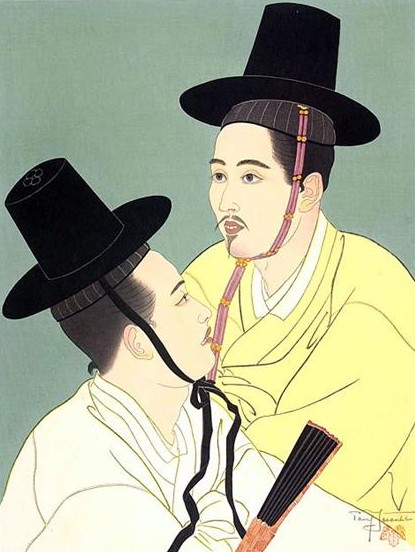GEORGES BIGOT (1860-1927)
Born in Paris in April 1860, Georges Ferdinand Bigot benefited from early artistic training: first with his mother who was a miniaturist painter ; at the Ecole des Beaux-Arts in Paris where he was a student of Léon Gérome ; with Félix Buhot who taught him etching ; then with specialists in Japan such as Louis Gonse, Philippe Burty and Felix Regamey. He began a career as a cartoonist in various newspapers, illustrated works by Émile Zola and Pierre Loti, but he succumbed to the immense attraction that "Japanism" represented in the West at the time and decided to leave for the Japanese archipelago. He arrived in Yokohama in January 1882 and stayed there for 18 years !
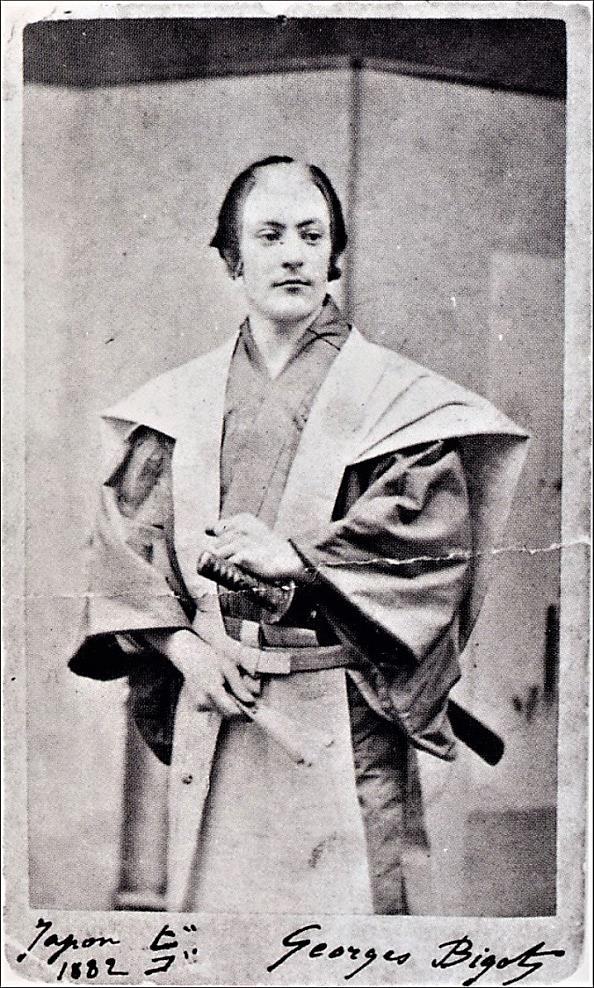
Benefiting from the attraction that the West aroused in all layers of Japanese society of the Meiji era, he taught drawing at the Military School in Tokyo, then French language in the school founded by the writer liberal Chomin Nakae, translator of Jean-Jacques Rousseau's Social Contract.
At the end of 1885, he was hired by the newspaper Kaishin Shimbum (progress) and, at the same time, he began to publish albums of etchings (such as Japanese sketches) and to illustrate books. The image he will give of Japan is very different from that of Pierre Loti in 1887 in Madame Chrysanthème.
That same year, he began to publish a satirical newspaper, Tobae, choosing the path of caricature to criticize the failings of the political world and Japanese society when they are misled by too rapid Westernization. He attracts the reprimands of the authorities, which force him to settle in the foreign concession where he escapes local regulations. Over the years, his assimilation continues: he speaks and writes the local language fluently, marries a Japanese woman with whom he has a child, dresses and lives like Japanese.
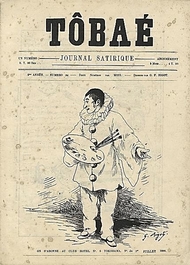
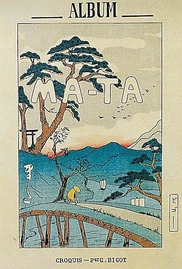

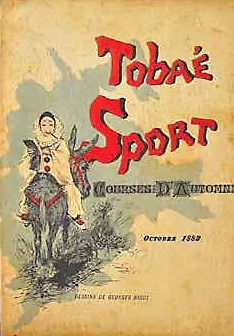
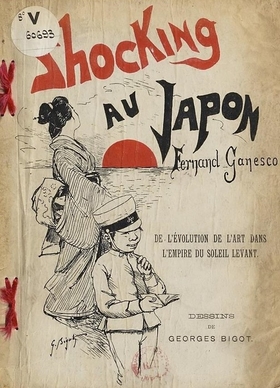
He multiplied his publications, always accompanied by drawings and caricatures which ensured him a growing notoriety in enlightened circles: The day of a geisha in Tokyo, The day of a deputy, New Year's Day, The Adventures of Captain Goudzougoudzou, Old England in China, Gossip of Yoko – we owe him 35 albums – are all bilingual booklets, easy to access and of great humor, lasting since his drawings continue to be republished regularly today and to be appreciated by young people.
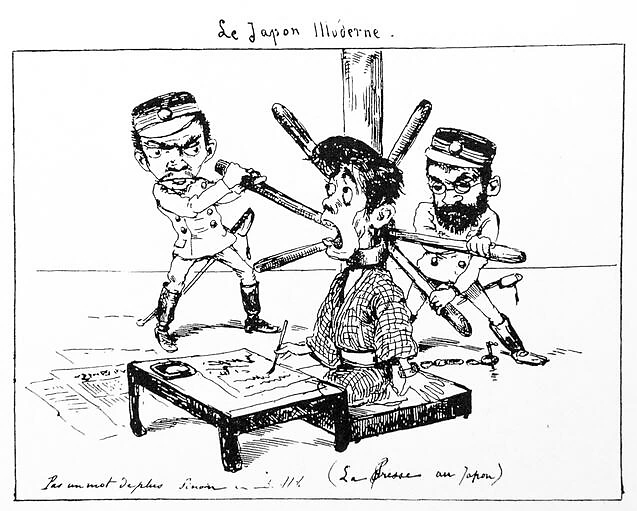
In 1893 he traveled to Siberia and China and covered the Sino-Japanese War of 1894/1895 for the British newspaper The Graphic. However, regretting the rise of Japanese nationalism and aware of the risks represented for him by the abolition of foreign concessions in 1899, he deemed it preferable to return to France where he pursued an active career as an illustrator until his death in 1927.
George Bigot occupies a special place in the Far Eastern movement : he is a pioneer - only in his time the British cartoonist Charles Wirgman chose to live in Japan ; his long stay took place entirely in the 19th century when Japanese society crossed the maintenance of its traditions and a rapid openness to Westernization ; he expresses himself essentially through drawing and caricature as he learned it in France and does not seek to adopt the local techniques of printmaking as the next generation will do ; however, he actively participated in the birth of Manga in the footsteps of the precursor that was Hokusai ; in doing so, he draws up in twenty years an extraordinary picture, realistic and striking, of the Japanese people in all its components and this unique artistic "reportage" is of major interest. If Georges Bigot is little known in France today, it is not the same in Japan where his drawings are sometimes reissued and where his humor remains greatly appreciated. He also leaves a large number of beautiful paintings and watercolours unfortunately very rarely exhibited.

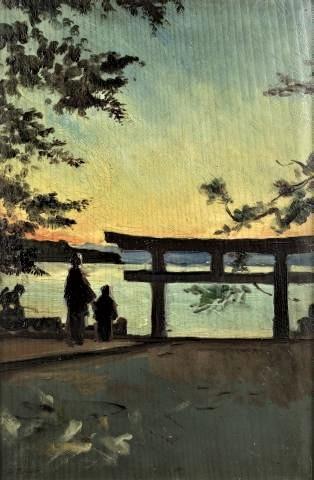
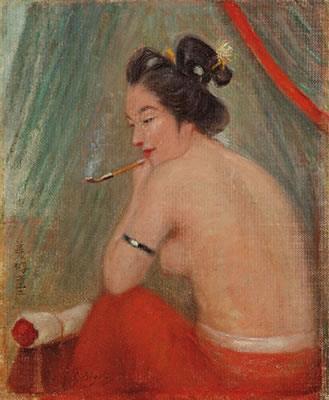
Bibliography :
- Georges Bigot, il y a cent ans un artiste français au Japon, catalogue de l’exposition organisée dans plusieurs villes du Japon et à Paris en 1987, Commissaire générale Hélène Cornevin, Réunion des Musées Japonais, Tokyo 1987
The collection
